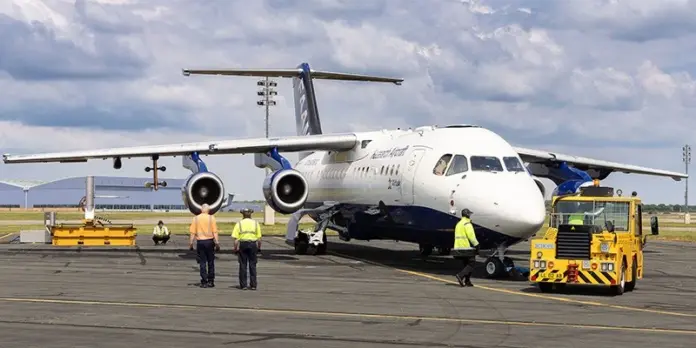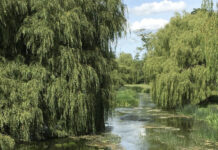team of scientists, including researchers from Manchester Metropolitan University, have conducted a series of first-of-a-kind experiments to learn more about the non-CO2 impacts of sustainable aviation fuels on the environment.
Through a pioneering project called GRIM-SAF (GRound-Based and Inflight Measurements), experts are investigating how sustainable aviation fuel could reduce aircraft emissions of soot and volatile particles, and a range of gases including nitrogen oxides, often referred to as the non-carbon dioxide (CO2) emissions.
Led by scientists from the National Centre for Atmospheric Science, academics from Manchester Met are working with a group of universities, research centres and aerospace companies to understand how different aviation fuels change the emissions and therefore the impact of flying on air quality and the climate.
In a UK-first experiment held at RAF Brize Norton, two aircraft flew in formation – with one trailing the other to sample its emissions – to compare the pollutants produced by sustainable aviation fuel and traditional jet fuel.
Previous in-flight emissions work in the UK has involved following several miles behind other aircraft whereas the aircraft involved in GRIM-SAF were able to get within 60 metres of each other.
Both aircraft also landed at RAF Brize Norton to make detailed ground-based measurements with the goal of linking this to the in-flight work.
Dr Simon Christie, Research Fellow at Manchester Metropolitan University, said: “The chase experiment marks a significant milestone in our research as we now have a real-life scenario through which to analyse the environmental impacts of sustainable aviation fuel against traditional jet fuel.
“We look forward to continuing to work with our partners to shape global measures to mitigate aviation’s climate change effects.”
These non-CO2 effects include the emission of soot and other substances, such as lubrication oil vented from aircraft engines, that can cause contrails to form.
Contrails are long, thin clouds made of ice crystals, which form when water vapour condenses on the tiny particles emitted by aircraft engines. Contrails sometimes spread out over large areas and can affect the Earth’s climate in the same way as naturally-formed cirrus clouds.
Emissions from aircraft aren’t just limited to the skies; ultrafine particles have been detected many kilometres downwind of airports at ground level, especially major airports that see heavy air traffic.
Dr Paul Williams, from the National Centre for Atmospheric Science and University of Manchester, said: “Although this type of experiment, with one aircraft following another in formation, is very useful for scientists to get an understanding of the emissions produced by burning different types of fuels, it is environmentally costly.
“GRIM-SAF aims to understand the emissions on the ground, and correlate these to emissions at altitude so future experiments don’t rely on chasing aircraft with other aircraft.”







